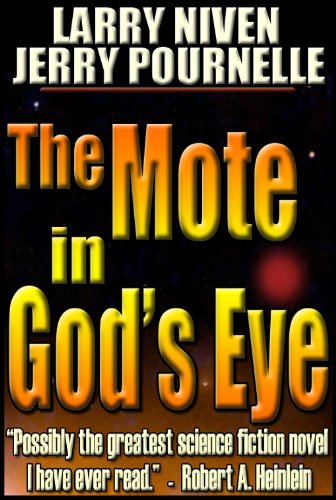 |
| Amazon Link |
Here's a brief plot summary (it's surely OK now for spoilers).
"An alien spaceship using a light sail to fly at speeds below the speed of light appears in the human system of New Caledonia. The ship has been traveling for at least 135 years.The Moties are an example of an r-selected species which, via their technological civilization, solve the high death-rate problem - at least until their numbers hit ultimate carrying capacity.
The Viceroy ruling the New Caledonia system, the Emperor's appointed representative, determines that a mission of two ships will be sent to the alien system that sent out the pod. Both species are wary, protective, and secretive.
Communication is established; understanding, however, remains more distant. One of the warships is invaded by a lower alien species and must be destroyed. Three Midshipmen end up alone on the planet, uncovering the aliens' desperate secrets of uncontrollable population explosion and giving their lives to protect Empire secrets.
Three aliens are sent to accompany the remaining human ship and crew back to New Caledonia as ambassadors."
From Wikipedia:
"As the name implies, r-selected species are those that place an emphasis on a high growth rate, and, typically exploit less-crowded ecological niches, and produce many offspring, each of which has a relatively low probability of surviving to adulthood (i.e., high r, low K).
In unstable or unpredictable environments, r-selection predominates due to the ability to reproduce quickly. There is little advantage in adaptations that permit successful competition with other organisms, because the environment is likely to change again. Among the traits that are thought to characterize r-selection are high fecundity, small body size, early maturity onset, short generation time, and the ability to disperse offspring widely.
By contrast, K-selected species display traits associated with living at densities close to carrying capacity, and typically are strong competitors in such crowded niches, investing more heavily in fewer offspring, each of which has a relatively high probability of surviving to adulthood (i.e., low r, high K). ...
In stable or predictable environments, K-selection predominates as the ability to compete successfully for limited resources is crucial and populations of K-selected organisms typically are very constant in number and close to the maximum that the environment can bear (unlike r-selected populations, where population sizes can change much more rapidly).
Traits that are thought to be characteristic of K-selection include large body size, long life expectancy, and the production of fewer offspring, which often require extensive parental care until they mature. ... Organisms with K-selected traits include large organisms such as elephants, humans and whales, but also smaller, long-lived organisms such as Arctic terns. ...
The r/K dichotomy can be re-expressed as a continuous spectrum using the economic concept of discounted future returns, with r-selection corresponding to large discount rates and K-selection corresponding to small discount rates."
The novel revolves around the debate between liberals and conservatives as to how to deal with the Moties (who pretend to be high-K liberals). It's an eerie book to read, weirdly analogous to contemporary debates in the media. It's been suggested on a regular basis that it would make a stupendous film, but until Hollywood learns to love The Donald, I fear their immune system makes that prospect stillborn.
---
Advanced capitalist countries have been carrying out an interesting experiment with effective birth control over the last fifty years or so. A possible result has been a decline in fertility leading to projected population collapses: Japan is often mentioned as a trend-setter.
Birth control is a central theme in the novel too. The treatment is very game-theoretic: over their history, some Motie continents under strong political leadership did in fact practice population control. They were simply outbred and then conquered by their more numerous competitors.
No comments:
Post a Comment
Comments are moderated. Keep it polite and no gratuitous links to your business website - we're not a billboard here.